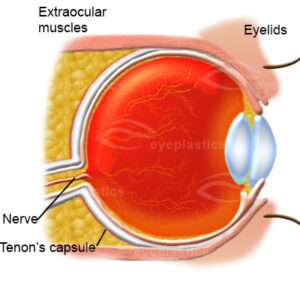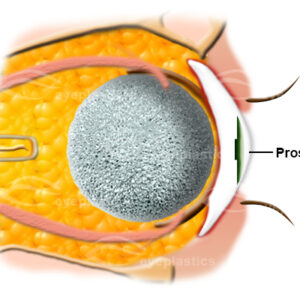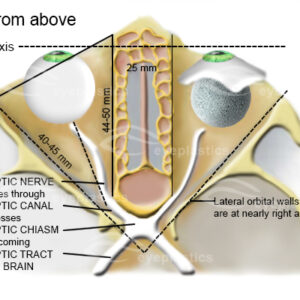Anophthalmia is a medical term used to depict the absence of the globe and ocular tissue from the orbit. This was originally reported more than 400 years ago, yet it is only recently that cogent reconstructive options became available. There are numerous reasons why one might lose an eye.
Note: You may click on any image below in this article to enlarge and view the description.
There are three classifications for this condition:
- Primary anophthalmia is a complete absence of eye tissue due to a failure of the part of the brain that forms the eye.
- Secondary anophthalmia the eye starts to develop and for some reason stops, leaving the infant with only residual eye tissue or extremely small eyes which can only be seen under close examination.
- Degenerative anophthalmia the eye started to form and, for some reason, degenerated. One reason for this occurring could be a lack of blood supply to the eye.
Etiology
Anophthalmia ( A medical term used to depict the absence of the globe and ocular tissue from the orbit ) can be congenital (present at birth) or acquired later in life. Congenital anophthalmia can occur alone or along with other birth defects. Cases of Anophthalmia might possibly result from inherited genetic mutations, sporadic genetic mutations, chromosome abnormalities, prenatal environmental insult or unknown.
True or primary anophthalmos is very rare. Only when there is complete absence of the ocular tissue within the orbit can the diagnosis of true anophthalmos be made. Extreme microphthalmos is seen more commonly. In this condition, a very small globe is present within the orbital soft tissue, which is not visible on initial examination.
Anophthalmia and microphthalmia might possibly occur secondary to the arrest of development of the eye at various stages of growth of the optic vesicle. It is important to recognize microphthalmia because the development of the orbital region, as well as the lids and fornices, is dependent on the presence of a normal-sized eye in utero. Anophthalmia is may be a clinical characteristic of Trisomy 13 which is a Gross Chromosomal Abnormality.
(Anophthalmia is very rare but the exact incidence is unknown. One report from a prospective study of 50,000 newborns found an incidence of microphthalmia of 0.22 per 1,000 live births)






